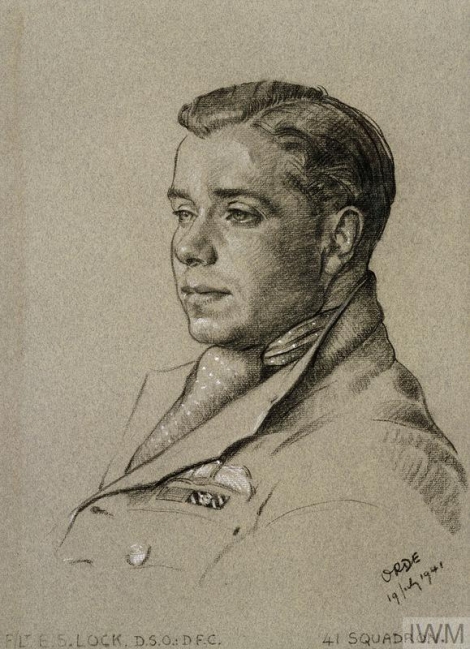Eric Lock
Second World War

Eric Lock was the most successful British-born fighter pilot in the Battle of Britain, shooting down 16 German aircraft and having a total of 22 confirmed victories. Born 19 April 1920 in Bayston in Shropshire, Lock was educated at Prestfelde School. He gained his first taste of flying on a trip to Sir Alan Cobham’s Air Circus. Initially unimpressed by the world of aviation, Lock joined his father’s quarrying and farming business, and thought no more about flying until the Second World War.
Joining the RAFVR in 1939, Lock was called up on the outbreak of war. Lock trained to fly Spitfires and was commissioned as a Pilot Officer, where he was posted to No. 41 Squadron at the end of May 1940. In August 1940, Lock achieved his first victory by intercepting a formation of Heinkel 111s and Messerschmitt 110s. A month later, Lock moved with No. 41 Squadron to RAF Hornchurch where he was heavily involved in the Battle of Britain. Over the course of September 1940, Lock shot down a further 15 German aircraft; he suffered minor injuries and had to bail out of stricken aircrafts three times. His bravery and determination in the Battle of Britain earned him the DFC.
In 1941, Lock was injured during a dogfight and underwent 15 operations over three months. Following the incident, he was awarded a DSO for his ‘magnificent fighting spirit and personal example’. Over the next few months, Lock found himself in the spotlight, having become something of a celebrity.
In June 1941, after several months of bedrest, Lock was deemed fit to return to duty. He was promoted twice in quick succession, first to Flying Officer and then to Flight Lieutenant. By July 1941, he was back in action and commanding a flight of Spitfires with No. 611 Squadron.
On 3 August 1941, Lock was shot down near Calais. While details surrounding the incident are unclear, it is widely accepted that Lock’s aircraft was shot down by ground fire when he swooped down to attack some German soldiers.
The remains of his aircraft and his body have never been recovered, meaning that Lock has no known grave. Lock is memorialised on the Runnymede Memorial in Surrey.




